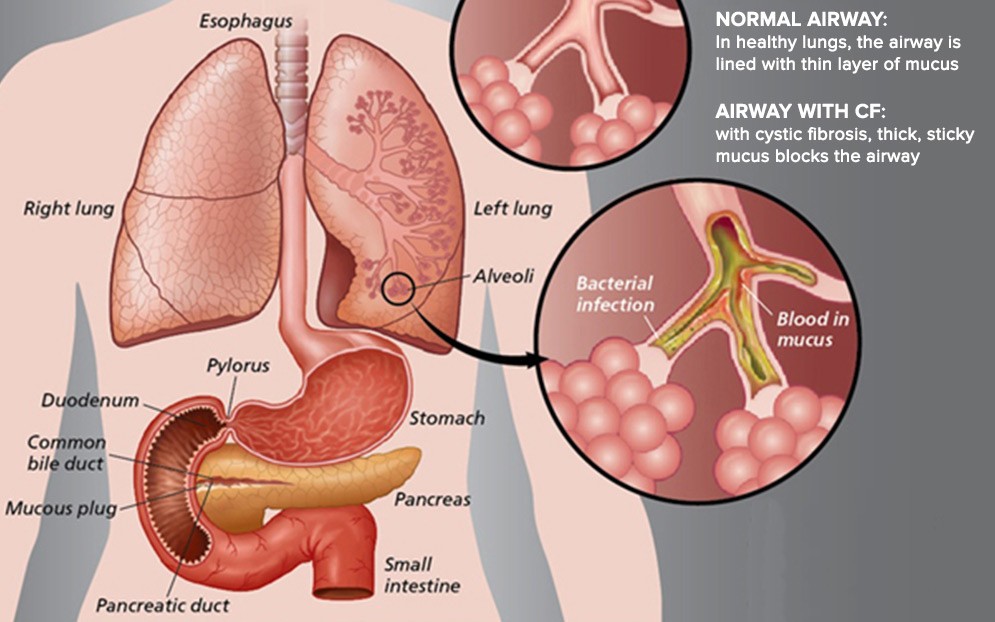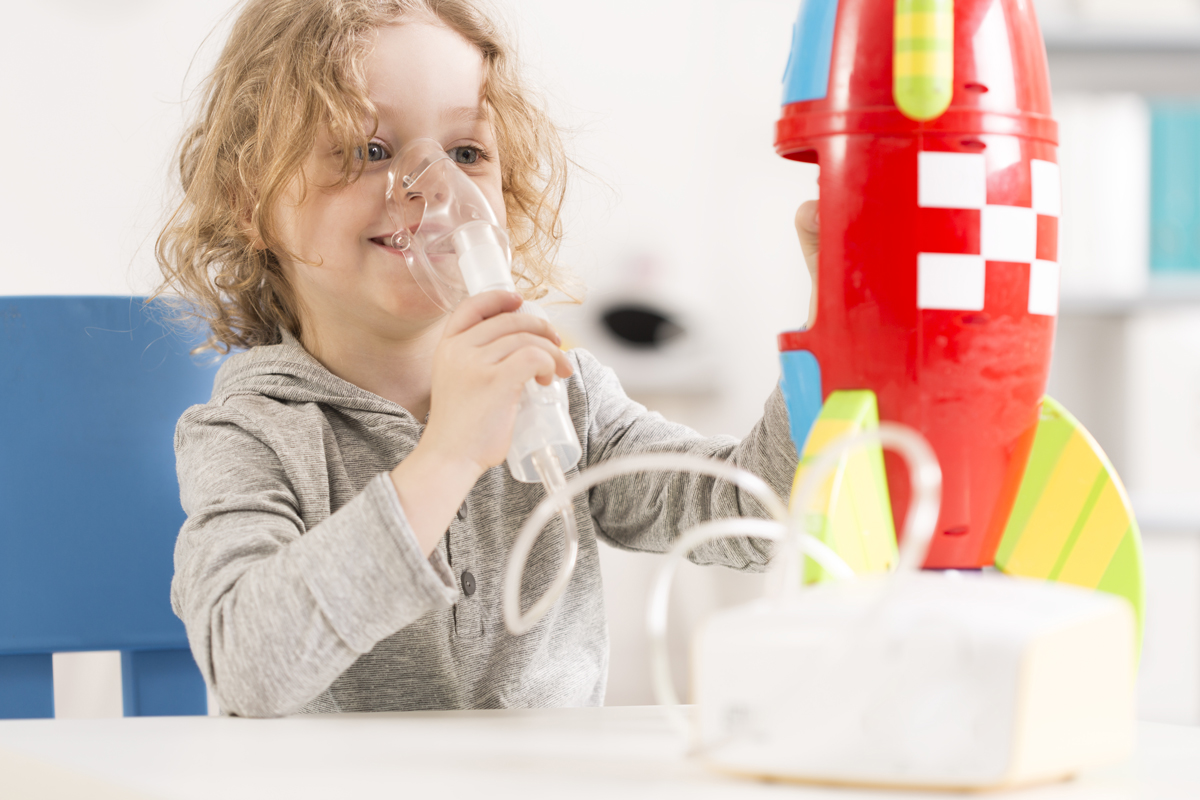Unlike many infections or diseases that affect the lungs and airways, cystic fibrosis is caused by a genetic mutation that results in a chronic bacterial infection in the airway (Knowles & Durie, 2002). Cystic fibrosis can also affect the digestive system. More than 70% of the cases are diagnosed before the age of two years old (Woo, 2017). In people with cystic fibrosis, patients experience poor absorption of food in their digestive system that makes them underweight, and they have chronic respiratory tract infections.

Cystic fibrosis is a complicated disease that has no cure; even though scientists are getting closer to a cure. In people with this disease, mucous will build up inside of the lungs because it cannot be properly moved across the surface of the lungs. As the mucous cannot be moved throughout the lungs, people with cystic fibrosis are more likely to get infections because bacteria become trapped within the mucous and grow uncontrollably. This can often cause chronic pneumonia, which is a lower respiratory tract infection.
These indications of the disease can cause health problems. For example, as people with cystic fibrosis have poor digestion, it can result in excessive weight loss, nutrient deficiencies and/or gastrointestinal problems.
Halotherapy has been explored as a complimentary treatment for cystic fibrosis. People with cystic fibrosis often have a persistent cough, wheezing, breathlessness, and infection & inflammation in the respiratory tract. For example, one study found halotherapy improved symptoms of cystic fibrosis by reducing cough and mucous buildup (Chervinskaya, 2003). Another study found halotherapy removes cells that cause inflammation and bacteria that could be potentially harmful to the lungs while increasing protective immune cells (Vladeva, 2015).
Halotherapy works on cystic fibrosis because there is a buildup of mucous and phlegm in the lungs. The body is not working effectively to clear the mucous. Therefore, halotherapy introduces large quantities of sodium into the lungs that absorbs moisture (mucous). The the mucous is now in a concentrated and can be removed from the lungs through coughing (Vladeva & Ovcharova, 2018).
Salt chambers have been shown to be hypoallergenic. This means, in the air, there are low amounts of pollutants, bacteria, fungi, and viruses in the air that could potentially irritate a person with cystic fibrosis. The high concentration of sodium in the air has been shown to be an antibacterial, anti-fungal, and act as an anti-oxidant. With these qualities, halotherapy can remove bacterial and fungi in the lungs of a patient with cystic fibrosis. These microbes can cause infections, therefore removing them through halotherapy is important and beneficial (Vladeva & Ovcharova, 2018).
The anti-inflammatory environment in a salt room lowers oxidative stress or molecules in the lungs of a patient with cystic fibrosis. This has an anti-inflammatory effects lowering the chronic inflammation in patients with the disease.
The benefits of halotherapy enhance the quality of life in a patient with cystic fibrosis.
Knowles, M. R., & Durie, P. R. (2002). What is cystic fibrosis?.
Chervinskaya, А. V. (2003). Halotherapy of respiratory diseases. Physiotherapy, balneology and rehabilitation, 6, 8-15.
Vladeva, E. (2015). Halotherapy–an alternative method for the treatment of respiratory diseases. Heart-Lung (Varna), 21(1-2), 31-35.
Vladeva, E. P., & Ovcharova, L. P. (2018). Halotherapy–benefits and risks. Scripta Scientifica Salutis Publicae, 4, 22-26.
Woo, M. (2017). Univeristy of California Los Angeles: What Causes Systic Fibrosis? Retrieved from https://www.youtube.com/watch?v=C_PJdZqXyck






